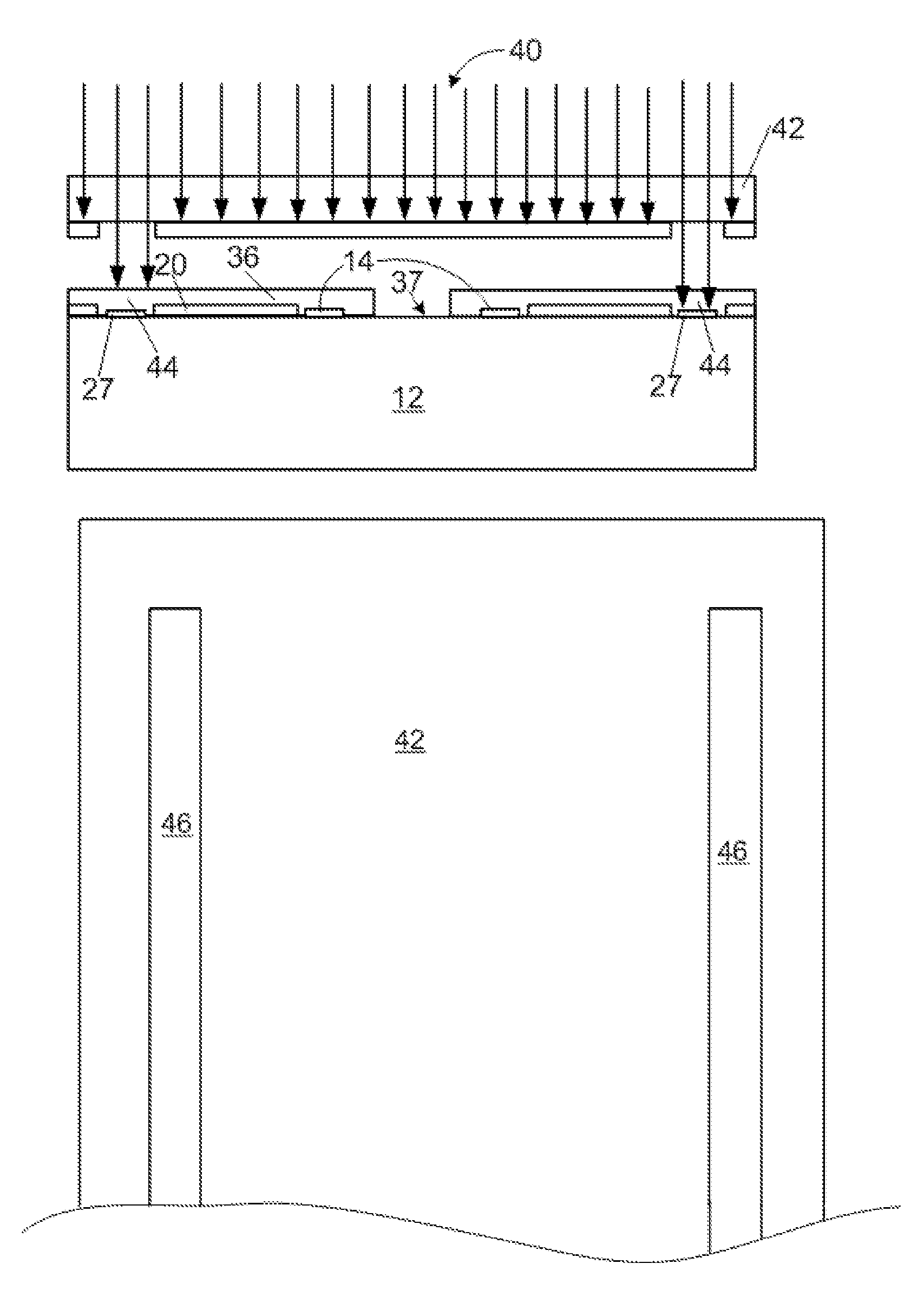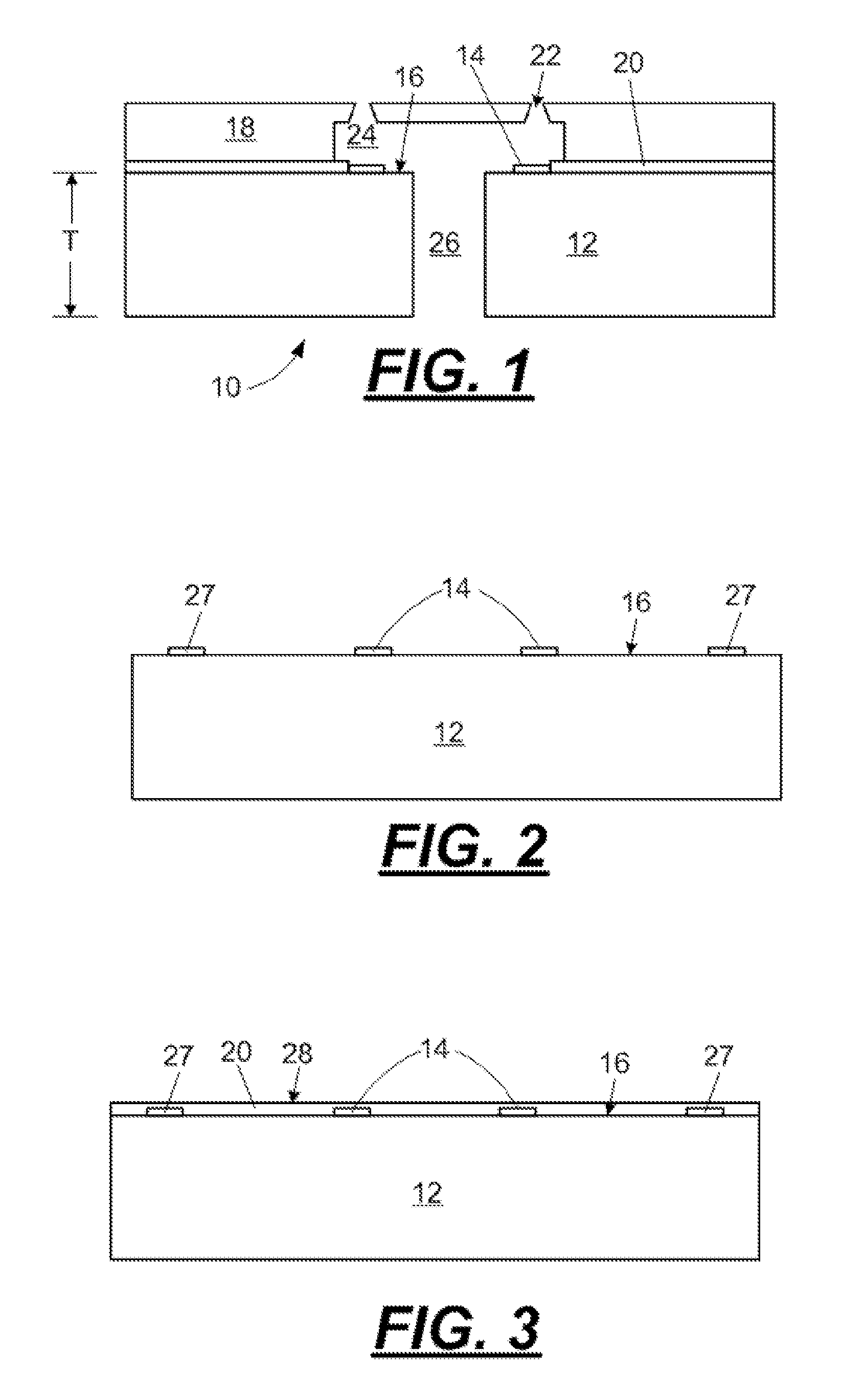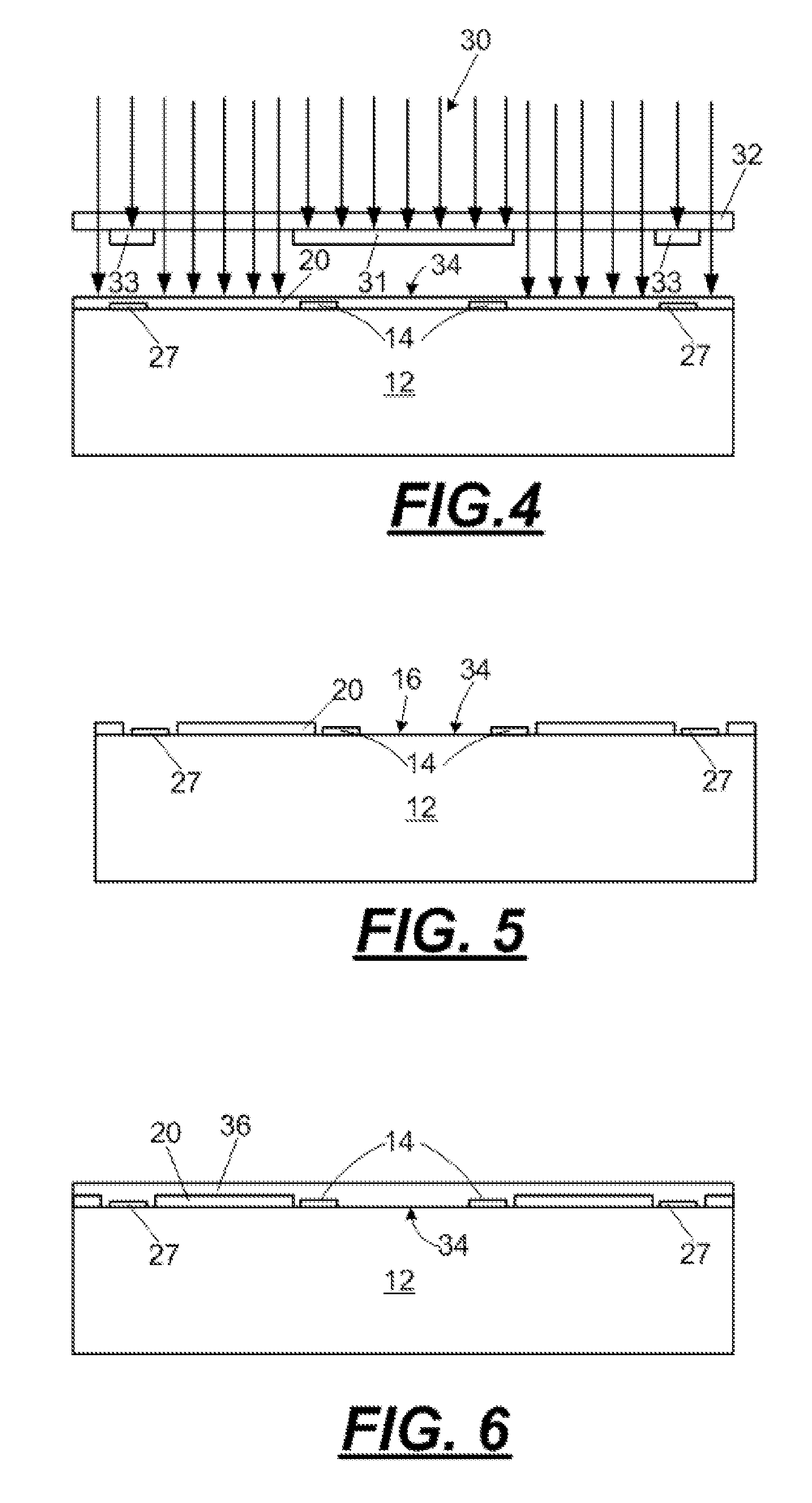Method for making a micro-fluid ejection device
a technology of microfluid and ejection device, which is applied in the direction of recording apparatus, instruments, photomechanical apparatus, etc., can solve the problems of relatively smooth planarization layer and substantially unchanged, and achieve the effect of less aggressive techniques and improved product yield
- Summary
- Abstract
- Description
- Claims
- Application Information
AI Technical Summary
Benefits of technology
Problems solved by technology
Method used
Image
Examples
Embodiment Construction
[0019] In one embodiment, there are provided methods for substantially removing an etch mask layer from a surface of a silicon substrate during a manufacturing process for making a semiconductor silicon chip used in micro-fluid ejection devices, such as ink jet printers. With reference to FIG. 1, a micro-fluid ejection head 10 for a micro-fluid ejection device such as an ink jet printer includes a semiconductor substrate 12, preferably made of silicon, having a thickness T. The substrate includes a plurality of fluid ejection devices such as heater resistors 14 on a device surface 16 thereof. The device surface 16 of the substrate 12 also includes various conductive, insulative and protective layers for electrically connecting the heater resistors 14 to a control device for ejecting fluid from the ejection head 10 and for protecting the resistors 14 from corrosion by contact with the fluid.
[0020] In order to provide a relatively planar surface for attaching a nozzle plate 18 to the...
PUM
| Property | Measurement | Unit |
|---|---|---|
| Length | aaaaa | aaaaa |
| Length | aaaaa | aaaaa |
| Length | aaaaa | aaaaa |
Abstract
Description
Claims
Application Information
 Login to View More
Login to View More - R&D
- Intellectual Property
- Life Sciences
- Materials
- Tech Scout
- Unparalleled Data Quality
- Higher Quality Content
- 60% Fewer Hallucinations
Browse by: Latest US Patents, China's latest patents, Technical Efficacy Thesaurus, Application Domain, Technology Topic, Popular Technical Reports.
© 2025 PatSnap. All rights reserved.Legal|Privacy policy|Modern Slavery Act Transparency Statement|Sitemap|About US| Contact US: help@patsnap.com



